#follow the leader 1930
Text

The New Movie Magazine, March 1931.
#greta garbo#follow the leader 1930#illustration#1930s#new movie magazine#pre code movies#old hollywood#old magazines#old movies#old movie stars#old hollywood glamour#vintage comics#vintage magazine#classic hollywood#1930s art#1930s cinema#1930s movies#30s#30s cartoons#30s movies#old hollywood actors#old hollywood actress#vintage cartoon#pre code#pre code comics#pre code film#old cartoons#old comics
52 notes
·
View notes
Text
To come to a dialectical conclusion on the clasicide of landlords under Mao Zedong, we must first: (a) understand historical context, (b) understand the popular will during that particular historical moment, (c) understand the material outcomes of the policy, and most importantly, (d) understand the dialectical and materialist foundation, justification, and theory.
Let us fisrt establish the historical context. Classicide ocurred in the late days of the second world war and the infancy of the Peoples Republic. In a roughly 5-7 year span. Predating the communist victory was a 12 year war against Japan, 10+ year civil war (with a break in the middle for the second sino-japanwse war), brief and chaotic rule under the GMD and warlords, followed by the Qing dynasty and beyond. During this time period, the peasantry was the largest and most oppressed class in the country, with minorities such as the Yi and Hui (and most famously, the Tibetan serfs) were entirely enslaved. During thr 1930s, in Shanghai alone, there would be employed body collectors who collected up to 100 dead peasants who had starved or froze to death in the streets. In the rural countryside, landlords held absolute sway over peasants who had to work the land and pay the rent with large proportions of their harvest. Landlords killing peasants for failure to meet quotas or rents was common and unpumished. Landlords raping peasants for rent or not likewise was common and unpunished. Evictions, property seizures, and forfeitures were also exceedingky common and backed by the state. For all intents and purposes, the peasant class was seen as entirely disposable banks of labor and nothing else. The forced selling of children to landlords so a family may survive was also common. The material effect of this millenia old system of oppression is a class full of revolutionary potential and (righteous) justified anger. Fanshen by William Hinton is a good documentary summary of the before and after of a rural peasantry village.
With the communist victory, the CPC put forth a very simple model for reform: assemble a committee of local and communist leaders, take suggestions and proposals from the population which are then put forth to a vote from the population. In many of the northern provinces, where communist bases and reform was more developed than the southern provinces, this process was largely peaceful and orderly. However, in the breadbasket of China, the southern provinces, where landlord control and excesses had been most fierce, the process was not nearly as peaceful. Apprehended landlords, mostly those who continued to try and hold land despite the incoming victory of the communists, were handed to the peasantey based on popular vote and they determined what happened to them. Usually, execution.
The outcome of the purging of the landlords was an egalitarian redistribution of of former landlord holdings to the peasants who actually lived and worked on the land. China at the time had about 500 million people. The landlord class was less than ten percent of the population, holding 70% of all the land. By the end of the land reform campaign, the entire class of landless peasantry was effectively eliminated as landless peasants were now landed.
The materialist and dialectical analysis of the land reform movement is as follows. The landlord class and the peasant class have diametrically opposed interests. The landlords want to maintain as much land as possible while the peasants want as much of the land as possible. There is no compromise solution because inevitably, these diametrically opposed forces will into play and class conflict will begin. If we give each class a 50/50 split, first of all, there would be no peasants to work the landlord's land and in effect, would eliminate the landlord class entirely as this too is a contradiction, but beyond that, the landlords want to get as much land as possible so they will put pressure on the landed peasants to sell or default so they can take it. This is an example of class warfare. Because there exists these antagonistic contradictions, the state exists to mediate class conflict. Before the communist victory, the state was controlled by the bourgeoisie, which included the landlord. This gave them all the power for mediation, allowing them to do whatever they want with no repurcussion, while any protest from peasants are shut down for "violence against property". When the communists put the peasantry in charge of the state, the script was flipped now it was the landlords' turn to eat their own medicine.
Eliminating the bourgeoisie as a class is not a secret communists are trying to hide. It is central to our thesis. By driving out landlords either through reeducation, exile, or killing, the result is rhe same: the destruction of the owning class. The only benefit of the landlord killings (if you want to call it that) is permanently compromising that individual landlord's chance of trying to gain back their power through insurrection, revolt, or other means.
Did excesses happen? Yes. Is killing landlords not ideal? Also, yes. However, we see that the landlord class interest of maintaining as much land as possible comes into conflict. The landlords were willing to rape, murder, enslave, evict, etc. to get more land before communist rule, and they were willing to kill and maim to keep it (hence why there was a civil war!). The contradiction thus could only be solved via violence. Thus, to criticize the landlord class liquidation is equivalent to criticizing the Algerians, or Vietnamese, or African slaves in Haiti and the americas in general as terrorists for fighting back, an opinion which only makes sense if you are not a member of these oppressed groups and classes.
You are, more likely than not, living in a dictatorship of the bourgeoisie. You are, more likely than not, not a member of the bourgeoisie (you work for a wage or salary and don't own things like a company, land, machibery, etc.), but rather a member of the proletariat. However, the ruling class in your country is not your class; it is the bourgeoisie. Therefore, the state has a vested interest in maintaining bouegeoisie rule. To that end, the media, economists, historians, teachers, etc. are groomed and incentivized into upholding bourgeoisie ideology. Thus, the rising of peasants against the bourgeoisie is seen as abhorrent violence, but the mundane violence of eviction, homelessness, starvation, as well as the casual murder, rape, and enslavement of the peasantey is simply seen as the cost of business at best, or entirely ignored or seen as good at worst. Thus, much of the literature on proletariat action is full of lies, exageration, and a focus on the bourgeoisie rather than the average person; the media has a bourgeoise class nature.
Know your class. Know your comrades. Know your class enemies.
341 notes
·
View notes
Text
black & palestinian solidarities
if you support black liberation but are unsure of your stance on palestinian resistance, here’s a reminder that they are deeply intertwined. after the 1917 balfour declaration by the british government announcing the first support for a zionist state in palestine, zionism and israeli occupation of palestine have followed similar ideologies and practices to white supremacist settler colonial projects, so solidarity between black and palestinian communities has grown over time, seeing each other as fellow anti-imperialist and anti-racist struggles. (if you get a paywall for any of the sources below, try searching them in google scholar.)
palestinians have been inspired by and shown support for black liberationist struggles as early as the 1930s, when arabic-language newspapers in palestine wrote about the struggle by black folks in the united states and framed it as anti-colonial, as well as opposing the 1935 invasion by fascist italy of ethiopia, the only independent black african state at the time. palestinian support for black struggles grew in the 1960s with the emergence of newly-independent african states, the development of black and third world internationalisms, and the civil rights movement in the united states. palestinian writers have expressed this solidarity too: palestinian activist samih al-qasim showed his admiration for congolese independence leader patrice lumumba in a poem about him, while palestinian poet mahmoud darwish’s “letters to a negro” essays spoke directly to black folks in the united states about shared struggles.
afro-palestinians have a rich history of freedom fighting against israeli apartheid, where they face oppression at the intersections of their black and palestinian identities. some families trace their roots back hundreds of years, while others came to jerusalem in the nineteenth century from chad, sudan, nigeria, and senegal after performing the hajj (the islamic pilgrimage to mecca) and settled down. still others came to palestine in the 1940s specifically to join the arab liberation army, where they fought against israel’s ethnic cleansing of palestinians during the 1948 nakba (“catastrophe”). afro-palestinian freedom fighter fatima bernawi, who was of nigerian, palestinian, and jordanian descent, became, in 1967, the first palestinian woman to be organize an operation against israel, and subsequently the first palestinian woman to be imprisoned by israel. the history of afro-palestinian resistance continues today: even as the small afro-palestinian community in jerusalem is highly-surveilled, over-policed, disproportionately incarcerated, and subjected to racist violence, they continue to organize and fight for palestinian liberation.
black revolutionaries and leaders in the united states have supported the palestinian struggle for decades, with a ramp-up since the 1960s. malcolm x became a huge opponent of zionism after traveling to southwest asia and north africa (SWANA), publishing “zionist logic” in 1964, and becoming one of the first black leaders from the united states to meet with the newly formed palestine liberation organization. the black panther party and the third world women’s alliance, a revolutionary socialist organization for women of color, also supported palestinian resistance in the 1970s. writers like maya angelou, june jordan, and james baldwin have long spoken out for palestinians. dr. angela davis (who received support from palestinian political prisoners when she was incarcerated) has made black and palestinian solidarity a key piece of her work. and many, many more black leaders and revolutionaries in the united states have supported palestinian freedom.
while israel has long courted relationships with the african union and its members, there has been ongoing tension between them since at least the 1970s, when all but four african states (malawi, lesotho, swaziland, and mauritius) cut off diplomatic ties with israel after the 1973 october war. while many of those diplomatic relationships were reestablished in subsequent decades, they remain rocky, and earlier this year, the african union booted an israeli diplomat from their annual summit in addis ababa, ethiopia, and issued a draft declaration on the situation in palestine and the middle east that expressed “full support for the palestinian people in their legitimate struggle against the israeli occupation”, naming israeli settlements as illegal and calling for boycotts and sanctions with israel. grassroots organizations like africa 4 palestine have also been key in the BDS (boycott, divestment, sanctions) movement.
in south africa, comparisons between israel and south african apartheid have been prevalent since the 1990s and early 2000s. israel historically allied with apartheid-era south africa, while palestinians opposed south african apartheid, leading nelson mandela to support the palestinian liberation organization as "fighting for the right of self-determination"; over the years his statements have been joined by fellow black african freedom fighters like nozizwe madlala-routledge and desmond tutu. post-apartheid south africa has continued to be a strong ally to palestine, calling for israel to be declared “apartheid state”.
black and palestinian solidarities have continued into the 21st century. palestinian people raised money to send to survivors of hurricane katrina in the united states in 2005 (which disproportionately harmed black communities in new orleans and the gulf of mexico) and the devastating earthquake in haiti in 2010. in the past decade, the global black lives matter struggle has brought new emphasis to shared struggles. prison and police abolitionists have long noted the deadly exchange which brings together police, ICE, border patrol, and FBI agents from the united states to train with soldiers, police, and border agents from israel. palestinian freedom fighters supported the 2014 uprising in ferguson in the united states, and shared strategies for resisting state violence. over a thousand black leaders signed onto the 2015 black solidarity statement with palestine. the murder of george floyd by american cops in 2020 has sparked further allyship, including black lives matter protests in palestine, with organizations like the dream defenders making connections between palestinian and black activists.
this is just a short summary that i came up because i've been researching black and asian solidarities recently so i had some sources on hand; there's obviously so much more that i haven't covered, so please feel free to reblog with further additions to this history!
#free palestine#black liberation#black and palestinian solidarity#black and asian solidarity#original
633 notes
·
View notes
Text
Ernst Rohm
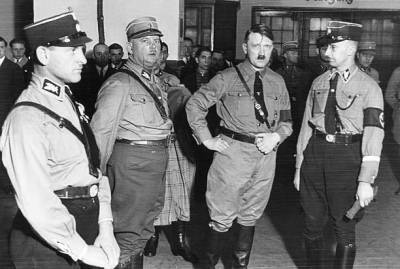
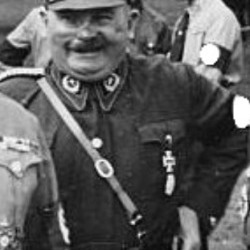
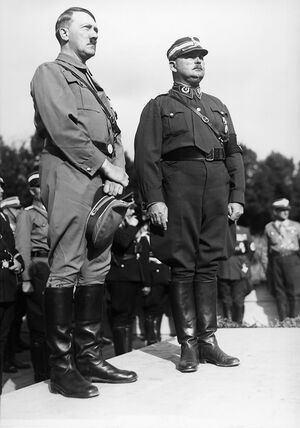
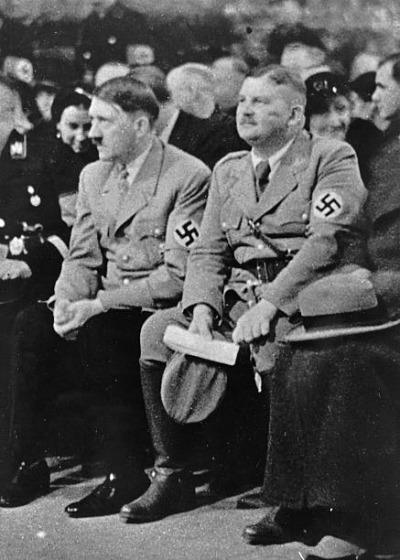

These are some facts and curiosities about Ernst Rohm, The Head of the SA:
He was born on 28th of November, 1887 in Munich.
Although born to a family of state officials and without military traditions, he was a soldier by choice and vocation. His phrase remained famous: "war and unrest attract me more than good bourgeois order".
At the outbreak of the First World War (1914-1918), Röhm served at the front as adjutant of the 1st Battalion of the 10th König Infantry Regiment and the following month was seriously wounded in the face during combat in the Chanot woods in Lorraine. In April 1915 he was promoted to lieutenant and on 20 June 1916 he was decorated with the Iron Cross first class.
At the end of the conflict he returned to Germany where he participated in the ranks of the groups of ex-combatants (freikorps) in the fight against the Bavarian Soviet Republic, proclaimed in Munich after the assassination of its inspirer, Kurt Eisner. Later, he joined the Reichswehr, coming into contact with the extreme nationalist Right.
He addressed Hitler by name and as 'you', the only Nazi to whom this privilege had been conferred.
In 1923 he took part in the Beer Hall Putsch. Shortly afterwards, in 1925, following some conflicts with Hitler, he broke off relations with the leader, agreeing to go to Bolivia to join the local army as a military instructor.
Called home expressly by Hitler in November 1930 to reorganize the SA following the unrest within it, Röhm threw himself enthusiastically into the new task: 170,000 in 1930, in 1933 the SA came to count more than two million members, taking a position of implicit rivalry towards the army.
He was capable of publicly ridiculing Rosemberg's pseudo-mystical ''Aryan philosophy'', causing embarrassment to those who, like Himmler, believed in this philosophy.
He had no respect for those who did not wear uniform and openly despised German civilians whom he dismissed as pigs.
Röhm joined Hitler's first government and was appointed Reichsleiter, the highest position within the NSDAP.
The moment of reckoning came in the summer of 1934, when the Führer received the news, secretly but officially, that the days of the old president, Paul von Hindenburg, were numbered. Hitler himself planned to succeed Hindenburg as president of the Reich, unifying the two positions of president and chancellor in his person and thus making his dictatorship legal and effective.
Hitler needed the immediate support of the army and knew well that, to support his bid for absolute power, it required the sacrifice of Röhm and the SA.
Forced into this difficult position, he absolutely needed a valid pretext to attack Röhm and his former comrades. Röhm's main enemies - Hermann Göring and Heinrich Himmler - took care to provide it to him, assuring him that they had proof that the SA was preparing to carry out a coup d'état against the Reich government, to thus hasten the completion of the "Second Revolution". Most likely it was not true, but Hitler believed - or wanted to believe - the version of his two main lieutenants and ordered them to crush Röhm's putsch.
He died on 1 July 1934 following the night of the long knives.
Sources:
Wikipedia: Ernst Rohm
Paul Roland: Hitler and his Loyalist
if you don't like it go with your life :))
I DON'T SUPPORT NAZISM, FASCISM OR ZIONISM IN ANY WAY, THIS IS AN EDUCATIONAL POST
97 notes
·
View notes
Note
what was the thought process for making crown a president in the 1960s? it seems so recent in history for a world-changing event like the dialup..or were there events in actual history at that time which lined up with your ideas?
I began writing an answer to this question without considering what I was aiming to describe and wound up writing an essay much longer than this answer wound up being (I went back and checked! I went back to write this!) but I'm not a historian, just a two-bit game dev, so I rewrote this answer to be as concise as possible (while fully answering the question.) I have a tendency to ramble.
The 1960's was a weird decade. In terms of societal/cultural change, I'm not sure any one decade in American history has a greater shift. Vietnam was the first war the US fought and blatantly lost (and with significant civilian opposition during the war, something never seen before, with even wars with significant political opposition (eg Mexican-American + Spanish-American wars) still having the support of much of the American public.) The civil rights movement advanced considerably with the passing of the civil rights act of 1964 and voting rights act of 1965. The 50's had significant change too as I'll mention later, though these civil rights acts had support from congress, and from the political party that had opposed previous civil right advancement no less, leading to a gigantic voting demographics shift that has largely remained to this day.
The Cuban Missile Crisis happened, which is the closest the world has come to nuclear war, arguably. MLK and Malcolm X were both assassinated, alongside a sitting US president (in broad daylight.) When cultural leaders get shot, that's a sign that things are really heating up.
The 40's + 50's weren't actually great decades for American counterculture. The tireless work from civil rights activists during the 50's shouldn't be forgotten either ofc, with Brown vs the Board of Education, the Federal government enforcing the Supreme Court's ruling in Little Rock and the Montgomery bus boycotts, but generally, questioning American foreign policy and criticism of capitalism were treated with ruthlessness - civilians were brought before HUAC and actors theorized of having communist sympathies blacklisted by the Screen Actor's Guild (whose head was none other than a young President Ronald Reagan.)
Not only did this keep 'Unamerican' perspectives out of the American media, but America also spent an impressive amount of money on war propaganda in the 40's (with even heavy-hitters like Disney pumping out cartoons to increase public support for the war), making US patriotism very popular before the 50's, which only became further cemented with McCarthyism taking hold by the early 50's. "Under God" was added to the PoA and references to God was added onto the American dollar to further separate US culture from atheistic marxist-leninist cultures like the Soviet Union.
While the 50's saw certain socioeconomic advances, it was also a time of cultural/political regression... followed by a time of mass political unrest/revolution. Think of the 1920's compared to the 1930's, say. This kind of political shift makes for the perfect petri-dish to produce powerful demagogues.
The early 60's is a really weird time because it's perfectly cemented between the dissolution of McCarthyism and the complete reorganization of the American political establishment, including counter-cultural ideas gaining mainstream appeal. Any earlier or later, and Crown's ideas probably wouldn't have had the same momentum. If Crown had ran for office any later, he'd have stopped much sooner, imo. Part of Crown's rise was down to how much his enemies underestimated how large his movement would become and how sweeping his brand of populism would be (with even people like Norm getting swept up in it.)
TL;DR: The early 60's was the perfect period of time for a man like Crown to gain a foothold in mainstream culture without his enemies realizing just how dangerous he was to them... by 1964, they understood all too well.
103 notes
·
View notes
Text
Nuremberg Defendants: Part 1, Alfred Rosenberg - Nazi Philosopher




I've created a new goal for 2024, which is to make posts about the defendants of the Nuremberg Trials. For the sake of the fact that there are already many Tumblr blogs that talk about specific figures from the trials, I won't be making these sort of posts for Göring or Speer. I made one for Hess a couple of months ago in response to an ask I received, which I will link here. These posts will be related to the lesser-talked-about defendants that stood trial and the first of these (because I'll be posting this on his birthday) will be Alfred Rosenberg.
-Alfred Ernst Rosenberg was born on the 12th of January 1893 in Reval (now Talinn), Estonia. His parents died when he was still fairly young and was raised mostly by his two parental aunts.
-What we know about Rosenberg's early life is very limited to what he wrote in his memoirs at Nuremberg. However, what we do know is that he had an elder brother called 'Janny', whose date of death is unknown (he had been arrested by the Soviets). From around his mid-teens he became interested in philosophy. We also know that some of his hobbies included sailing in the summer and ice skating in the winter, and that his nickname given to him by family (or at least referred to by his niece in letters) was 'Freddy'.
-Rosenberg had studied to be an architect and obtained his PhD in 1917. At his stays at home in Estonia he worked as a drawing teacher.
-Rosenberg spent the years of the First World War as a student. He had volunteered to serve in the army but was rejected on the grounds of his nationality. After the revolution in Russia, Rosenberg fled to Munich where he was taken in by Dietrich Eckart.
-Rosenberg had planned to continue with his career in architecture in Munich, but had eventually started working for the far-right newspaper 'Völkischer Beobachter' (English: People's Observer). This paper was sponsored by the Thule Society, a group that which Rosenberg was a member of (and adding onto this, Rosenberg was one of the very first to join the Nazi Party). In 1923 Rosenberg became editor-in-chief of the newspaper.
-Rosenberg, like all of the early members of the party, took part in the Beer Hall Putsch in 1923. Rosenberg had escaped from police and took refuge in the home of an old lady. After the Putsch, Hitler had named Rosenberg as leader of the Nazi movement. This was a tactical move made by Hitler, as Rosenberg was regarded as lazy and was not as dominant as other members of the movement (such as Julius Streicher - who I will be making a post on in the future). Hitler knew that there was no chance of Rosenberg completely taking control of the whole movement, which therefore secured Hitler's leadership, which was restored to him after being released from prison.
-Also in 1923, Rosenberg obtained a divorce from his first wife, Hilda Leesman. Hr married her in 1915, however she was often sick and never followed Rosenberg to Germany. Rosenberg presented himself as the guilty party when obtaining a divorce. His first wife died in 1928 from tuberculosis. Rosenberg married his second wife, Hedwig Kramer, in 1925 and the marriage lasted until Rosenberg's death. Together they had two children: a son that died in infancy, and a daughter, Irene, born in 1930.
-Rosenberg was also often the victim of numerous rumours. For example:
A common rumour was that Rosenberg was in fact Jewish. His last name obviously didn't help with these rumours. He also didn't put in much effort to clarifying his ethnic background (but this was to keep the rest of his family - occupied by the Soviets - safe).
A rumour spread mostly by Hermann Göring was that Rosenberg had been working as a French spy during World War 1.
Another rumour was that he had an “unsavoury romantic life” which included him attending orgies of both men and women. This was a rumour spread by Ernst Hanfstaengl. Hanfstaengl gives no source for this, however he is also incredibly biased against Rosenberg so we can also assume that this was made up.
-Rosenberg is most well-known for his book “The Myth of the 20th Century”. This book shows us his ideas of National Socialist philosophy, a form of National Socialism which he later claimed was never truly realised. The Myth sold around 1 million copies by the end of the Second World War. The book at the time was not translated into any other languages, as per Rosenberg's request, although a refined version was written by Rosenberg for use in schools (however Rosenberg personally disagreed with this too, believing it was for the youth themselves to develop their own ideas). It's also interesting that Hitler personally disliked The Myth. He claimed that it was something that ordinary people would not understand and made digs at Rosenberg's Baltic background.
-An important part of Rosenberg's ideology was his fierce anti-Christianity, especially in regards to the Catholic Church. Rosenberg himself was raised Protestant but believed there to be no need for Christianity, and also believed that Christianity was gradually dying out.
-Upon the Nazi's coming to power, Rosenberg's primary role was related to being the party's chief ideologist. This role undoubtedly had its limits. A specific example was the amount of real influence he had over schools. Rosenberg had no direct influence over schools and other party officials made sure that he could not intervene in schools. His desired plans for 'Hohe Schule' eventually had to be abandoned.
-In the Second World War, Rosenberg was given a big role, being made Reichsminister für die besetzten Ostgebiete (English: Reich Minister for the Eastern Occupied Territories) after Germany had made successful advances in the East. However, once again, Rosenberg's role was limited. He was constantly blocked by other party members (including Reichsmarschall Hermann Göring, Minister for Occupied Ukraine Erich Koch, Hitler's private secretary Martin Bormann, as well as constant battle over authority with foreign minister Joachim von Ribbentrop).
-Rosenberg's position on the governance of the Eastern Territories was different to that of Erich Koch. Where Koch saw dictatorial opportunities in Ukraine, Rosenberg saw an opportunity to break up the USSR and allow for self-governance of the eventual newly-created states.
-Rosenberg was personally horrified by the treatment of Slavic peoples during the war and there are moments in which he intervened (as best as he could). There is no evidence that he intervened on behalf of Jews, but Dr Otto Bräutigam recorded an occasion where Rosenberg condemned 'wild excesses' against Jews in Russia (however this does not mean that his opinions on Jews and anti-semitism had suddenly changed, they did not). Rosenberg had a principle that some ethnic groups were 'more deserving' than others, and this basis had saved lives of prisoners of war by getting separate camps set up for them and sending out inspectors to tour them. Although Rosenberg's motives were often not clear, his interventions were usually on the side of sanity and in some cases humanity.
-After the failures of Stalingrad and when territory in the East began to erode, Rosenberg's role as Minister for the Occupied Eastern Territories became increasingly meaningless. Only in 1944 did Rosenberg pluck up the courage to send a letter of resignation to Hitler, however Hitler did not bother to respond to this letter. It's suggested that if Rosenberg had resigned in 1943 (as advised by the staff that worked under him), it's likely that he would have been spared by the hangman's noose.
-Prior to his capture in May 1945, Rosenberg had considered committing suicide along with the rest of his family to avoid capture by the Russians. He had acquired enough cyanide for himself, his wife and his daughter. However, Rosenberg had a change of heart, apparently throwing the cyanide into the sea at Flensburg (according to his Nuremberg memoirs). After this Rosenberg had sprained his ankle (throughout adulthood he always had problems with his foot) and had to be taken to a military hospital where Rosenberg then gave himself up to the Allies. Albert Speer claims that Rosenberg was drunk when he sprained his ankle, however Speer was not present nor did he provide a source for this information. Rosenberg claims that he was not drunk but had to be carried.
-In the Nuremberg Trials Rosenberg was defended by Dr Alfred Thoma. Rosenberg's examinations by the prosecutors at Nuremberg are fairly awkward. For example, the Russian prosecutor M. Y. Raginsky gave a description of Rosenberg's authorisation of the removal to the Reich in 1944 of 40,000 homeless Russian orphans (this is something I will refer back to again shortly), but the prosecutor fell silent when Rosenberg alleged that a similar number of adults had been deported to the USSR in 1940 from the states of Latvia and Estonia. US prosecutors also had their awkward moments, for example Thomas Dodd who heatedly accused Rosenberg of persecuting religion.
-Coming back to my mention of the removal of Russian orphans to the Reich: although Rosenberg could not deny that he authorised the removal, to Rosenberg's credit he could maintain that he had cared of the wellbeing of the children and had visited the camp near Dessau. Dr. Thoma insisted that Rosenberg took charge of them at the personal request of Field-Marshall von Kluge, who feared that they would otherwise fall into the hands of Fritz Sauckel. There is also confusion of the numbers involved. The Russian prosecutor alleged 40,000 orphans; whereas Dr. Thoma admitted to 20,000. However, expert opinion now suggests that the real figure was somewhere between 2,500 to 3,000 orphans.
-Rosenberg followed trial proceedings very closely whenever it concerned him personally. On several occasions while being examined but the Russians, he tried to intervene to check the the translation, which he claimed to be distorting what he had said. Whenever he wasn't being examined, he tended to lose interest and spent his time making pencil sketches of witnesses.
-Although Dr. Thoma did his best, Rosenberg's defence was handicapped for a number of reasons. One of the main reasons was that documents and witnesses were provided at the indulgence of the prosecution. Rosenberg had tried to call a witness to testify on behalf of his work in German-English relations, however there was o response. Another reason is that Rosenberg himself gave complicated answers when being examined, so much so that even Dr. Thoma had asked him to be more concise.
-Rosenberg was found guilty on all four counts of the indictment of the tribunal and was sentenced to death by hanging. Upon the scaffold when asked if he had any last words Rosenberg said “no”, being the only criminal condemned to the gallows to have no last words. Rosenberg was hung in the early hours of October 16th, 1946.
37 notes
·
View notes
Text
Historical Background for 《无名》 (Hidden Blade)
A very brief summary of historical details of note for understanding the context of the film:
The film is set during the Second Sino-Japanese War and WWII. There are several powers in play at this time: the Chinese Communist Party, the Chinese Nationalist Party or Kuomintang, and Imperial Japan. Imperial Japan invaded Manchuria (located in northeastern China) in the early 1930s and established the puppet state of Manchukuo. It was here where they hoped to establish a base from where they would continue their expansion into Asia.
In 1937, after many years of conflict, Japan occupied Shanghai, Nanjing, and Beijing. The Nanjing Massacre occurred at this time. After the fall of Nanjing, which had been the capital of the Republic of China at that time, the Kuomintang moved the capital west to Chongqing, under Jiang Jieshi's leadership. During this time, the Chinese Communist Party and the Kuomintang formed a temporary alliance, suspending the years of civil conflict between them, although their vie for power continued. The Chinese Communist Party set up their base in Yan'an.
In 1940, Wang Jingwei, who was once a member of the Kuomintang but had always been in opposition against Jiang Jieshi, collaborated with Japan to establish the Wang Jingwei regime. They claimed to be the leadership of the Republic of China, when in fact they were a puppet government of Japan, overseeing the Japanese-occupied territory in eastern China, under Japan's control. They established their capital in Nanjing and used the Kuomintang flag. The Axis powers recognized the Wang Jingwei regime, while the Allied powers still recognized Jiang Jieshi as the leader of the Republic of China.
From 1937-1941, Japan had left a few neighbourhoods in Shanghai unoccupied, because that was where the American-British joint settlement and French Concession were located. Many people fled to this area to live at that time. After Pearl Harbor in 1941, the entirety of Shanghai became occupied by Japan. Many cities were bombed during these years, including Guangzhou, which experienced bombings for 14 months in 1937-1938.
During this era of war, which is also called the War of Resistance in China, espionage networks were established to try to undermine the enemy. Hidden Blade tells a story about these individuals.
Characters in the film (spoiler-free):
Director He (Tony Leung): Director of the Political Security Department for the Wang Jingwei regime
Mr. Ye (Wang Yibo): A subordinate under Director He, works for the Political Security Department of the Wang Jingwei regime
Captain Wang (Wang Chuanjun): A captain working for the Political Security Department of the Wang Jingwei regime, under Director He
Minister Tang (Da Peng): Minister of the Political Security Department of the Wang Jingwei regime, Director He's cousin
Officer Watanabe (Mori Hiroyuki): Head of secret service in Shanghai, claiming to be a follower of Ishiwara's faction (Japanese general who believed in the Pan-Asianism ideology)
Mr. Zhang (Huang Lei): A secretary of the Chinese Communist Party's underground network
Ms. Chen (Zhou Xun): A messenger of the Chinese Communist Party's underground network
Ms. Jiang (Jiang Shuying): Kuomintang agent assigned to assassinate Minister Tang
Ms. Fang (Zhang Jingyi): Disguised as a dancer, she worked together with other progressive youth to try to assassinate Japanese officers
#wu ming#hidden blade#hidden blade movie#无名#wang yibo#tony leung#zhou xun#huang lei#da peng#jiang shuying#wang chuanjun#zhang jingyi
310 notes
·
View notes
Text
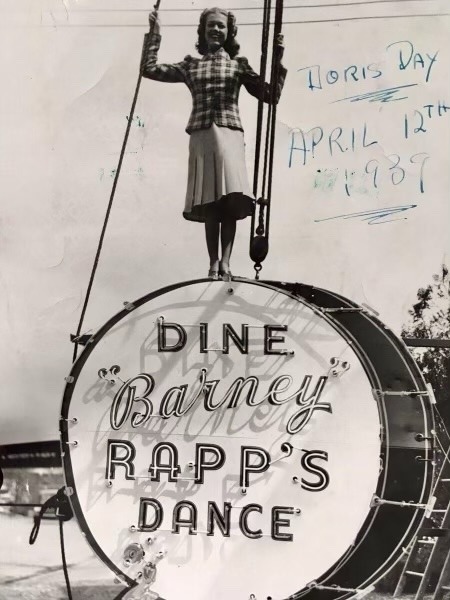
Doris … April 12, 1939. Doris sang with Barney Rapp’s band at his nightclub Sign Of The Drum.
Barney Rapp was a popular band leader and jazz musician for nearly three decades. He is best known for discovering Doris Day and launching the career of Rosemary Clooney.
Barney Rappaport was born in Connecticut on March 25th, 1900. When he was 20-years-old he organized a Jazz orchestra that was styled for dance music. He named it "Barney Rapp and His New Englanders." In a unique move, Barney, unlike most orchestra leaders of his day, played the band's drums. The New Englanders gained a popular following on the East Coast. Barney eventually moved to Cleveland, Ohio, and then to Cincinnati. Once there, his band became a regional attraction, routinely getting their music played on the radio. The band eventually recorded several albums on RCA Victor and Bluebird. Among their early recordings is an MGM film short featuring the band.
The band toured the country in the 1930s and 1940s. Barney needed a vocalist and hired singer Ruby Wright. She became the featured singer with Barney’s band. The professional relationship between Barney and Ruby eventually turned personal and the two were married in 1937. The couple bought a nightclub in the Cincinnati area and named it the ‘The Sign of the Drum.’ Of course, Barney, Ruby, and the New Englanders often performed there.
Barney launched the careers of many artists who went on to achieve great fame: His most famous discovery was 14-year-old Doris Kappelhoff. Barney asked her name, and upon hearing it said: "It’s a very nice name but a little too long for the marquee outside." He suggested the name Doris Day after hearing her sing "Day After Day.” Doris replaced Barney’s wife Ruby as the band’s featured singer when Ruby became pregnant in 1939 • After hearing the teenage Clooney Sisters, Rosemary and Betty, sing on the radio in Cincinnati, Barney recommended the girls to bandleader Tony Pastor • Others who got their start with Rapp include actor Eddie Ryan and singer Barry Wood, who is best known for being Frank Sinatra's immediate predecessor as the lead male vocalist on ‘Your Hit Parade.’ Wood also performed with musician Buddy Rogers.
In the fall of 1956, Barney and Ruby started the ‘Reds' Rooters Fan Club.’ Waite Hoyt, Hall of Fame pitcher and Cincinnati Reds Radio Broadcaster, urged his friend Barney Rapp to promote a fan trip to Milwaukee to help root the Reds on to victory. Over 700 people traveled by train to cheer on their team. This was the beginning of the Red Rooters’ Club. Under the leadership of Barney, the Red Rooters’ Club took fans all over the world including every National League city, several American League cities, Japan, and Europe. Over 100,000 Rooters have traveled to root for the Reds.
Barney Rapp died on October 12th, 1970, at the age of 70. He is interred in Spring Grove Cemetery in Cincinnati, Ohio.
#doris day#1930s#big band singer#big bands#classic movies#classic hollywood#vintage#barney rapp#sign of the drum
36 notes
·
View notes
Text
Favorite films discovered in 2023
2023 kind of sucked, but it was a fruitful year for me as a movie geek. I finally got around to seeing films that have been on my TBW pile for years now. I also gave myself a challenge that I actually completed: watch at least one film from every year between 1900 and 2023.
Anyway, I'll stop beating around the bush. Here are my top 20 favorite film discoveries in 2023. (The order is very, very loose from 5 on down. I genuinely had a hard time narrowing the list down to 20, let alone ranking everything.)
When a Woman Ascends the Stairs (dir. Mikio Naruse, 1960)
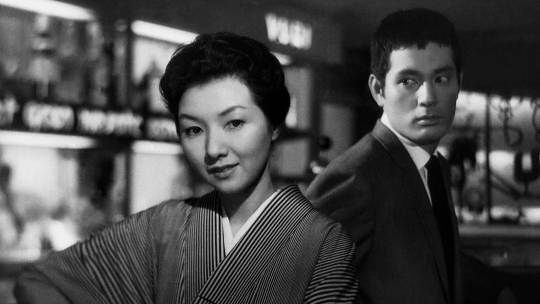
This well-regarded drama follows Keiko, a bar hostess who's just turned 30 years old. She has limited options as an unmarried woman in postwar Japan. Considered "old," she has to marry soon or scrape enough money to buy her own bar. With its jazzy score and first-person narration, When a Woman Ascends the Stairs has a noirish vibe but it certainly isn't noir at all. Though the film is tragic, what moved me so much was Keiko's character. She has a tough lot and her story is ultimately tragic, yet she is determined to keep going, even if life won't give her a break.
The Boy and the Heron (dir. Hayao Miyazaki, 2023)

Miyazaki's current "last film" is certainly his most abstract and puzzling. I imagine it'll be one of his more divisive titles in the years to come, but count me among its fans. While being "in the know" regarding the current state of Studio Ghibli and Miyazaki's 60+ year-long career in animation allows one to better appreciate the many allusions and themes within the film, it stands just fine on its own as a surrealistic adventure about grief and the power of art. Also, damn, I LOVE hand-drawn animation so much.
Black Cat (dir. Kaneto Shindo, 1968)
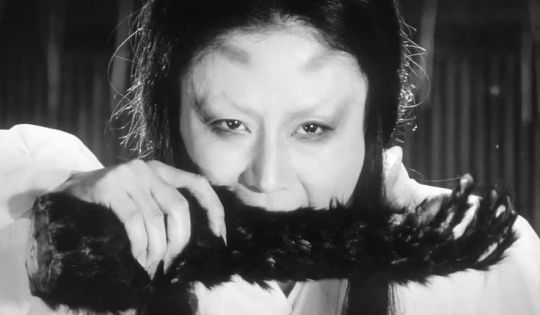
Kaneto Shindo's Black Cat is yet another confirmation of my feeling that horror pairs best with humor or heartbreak. While there are some morbidly funny moments, Black Cat is largely a devastating supernatural horror story about a young samurai who encounters two mysterious women in the woods, not realizing they are the ghosts of his murdered wife and mother. Even worse, they've sworn to kill any and all samurai they encounter, since their deaths were the result of raping, pillaging samurai-- but they remain human enough to desire an exception. I was creeped out thoroughly by the chilly atmosphere and imagery of this film. I liked it even better than Shindo's Onibaba and that was one of my favorites from 2022!
Malcolm X (dir. Spike Lee, 1992)
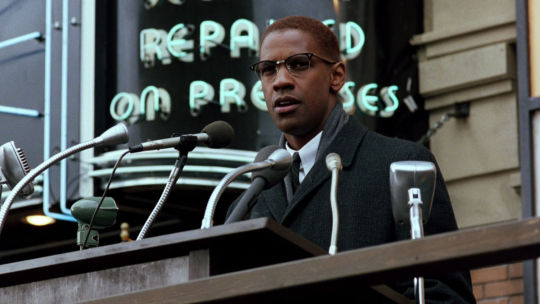
I usually dislike big movie biopics for being stuffy and formulaic. Malcolm X avoids both of these issues. Directed to the hilt by Spike Lee, this film is passionate and compelling, about as far from a stuffy Oscarbait biopic as you could imagine. Also, Denzel Washington is AMAZING in the titular role. Like, we're talking one of the best performances I have ever seen because not only is Washington convincing as Malcolm X, he also perfectly portrays his arc from zoot-suited young criminal to uncompromising activist leader. I was absolutely mesmerized the entire time-- it's a long movie that never feels its length and I'll definitely be revisiting it in the future.
The Kiss Before the Mirror (dir. James Whale, 1933)

James Whale’s horror movies are listed among the finest 1930s cinema had to offer, but his other works remain woefully overlooked. The Kiss Before the Mirror is a strange marital drama set in a dreamlike interwar Vienna. A lawyer defending a murderer who shot down his cheating wife comes to discover his own wife in the midst of a casual affair. Will this discovery lead to another killing? Despite the lurid plot elements, Kiss is closer to Kubrick’s introspective Eyes Wide Shut than a typical 1930s melodrama. Both husband and wife are complex characters struggling with destroyed illusions, making the story a hell of a lot more complex than you'd expect.
Five Miles to Midnight (dir. Anatole Litvak, 1962)

I am so glad I ignored the meh reviews on this one because I would have missed out on one of the best thrillers I've seen in years. Sophia Loren is a woman desperate to shake off her narcissistic, abusive husband played by Tony Perkins. When Perkins is wrongly believed dead in a plane crash, he hides out in Loren's apartment so they can collect the life insurance money, split the funds, then part amicably. This being a Hitchcock-style thriller, it doesn't work out that way. What sells the film is the psychological cat-and-mouse game between Loren and Perkins's miserable, mismatched married couple, and a noirish sense of doom lends a great deal of atmosphere.
Shoes (dir. Lois Weber, 1916)
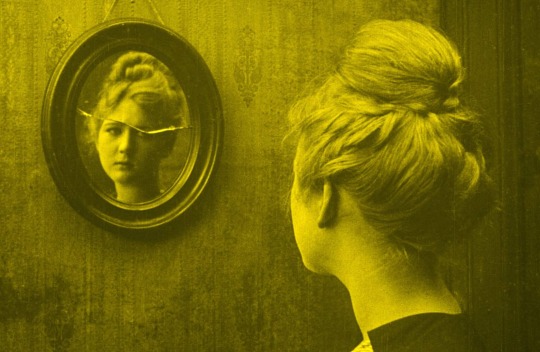
Shoes is the best Lois Weber film I have yet seen and it still packs a wallop a century-plus since its initial release. Mary MacLaren plays a young woman single-handedly supporting her family on a five dollar a week salary. She wears shoes that are falling apart but can never seem to save enough for a new pair-- that is, until an unsavory way of getting the cash presents itself, much to her horror and temptation. This is a heartbreaking little film that showcases a lot of what I love about 1910s American cinema. There's less glamor in the settings and nothing at all genteel or cleaned up about the poverty on display. MacLaren is wonderful in the lead too, her performance a quietly compelling portrait of quiet desperation.
Jeopardy (dir. John Sturges, 1953)

Barbara Stanwyck was in such a wealth of films that I can forgive myself for not realizing this one even existed. After seeing it, it's easily in my top five favorite films of hers. On the surface, the plot sounds like fodder for sleazy sex fantasy: a housewife on vacation is kidnapped by a hot escaped convict. She's racing against time to save her husband from drowning after the tide comes in at the beach where he's trapped; the convict has a very specific price for any aid he's willing to offer. Stanwyck's characterization complicates the situation and the direction amps the tension to a breaking point. Great, great stuff!
Girlfriends (dir. Claudia Weill, 1978)

This film came across my path in a weirdly personal way. One of my sisters got engaged this year. We've been close all of our lives and shared an apartment for years, so this is going to be a big change for both of us. Girlfriends is about a young woman whose best friend is getting married, meaning she'll be on her own for the first time. In addition to making this adjustment, she's a photographer currently hired for weddings and bar mitzvahs, but dreaming of entering the larger world of art galleries. I guess you could say it's a 70s version of a quarter-life crisis film (Noah Baumbach's Frances Ha takes A LOT from it). The performances and direction are exceptional, having that unglamorous, lived-in vibe I love about the films of this period. It also just happened to come into my life at the most resonant time, so there's that.
Ivan the Terrible, Parts One and Two (dir. Sergei Eisenstein, 1945 and 1958)
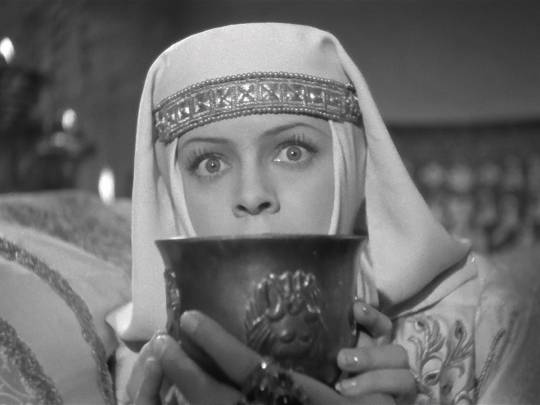
As a person who hates the idea that realism is the only valid form for cinematic drama, Eisenstein's hyper-stylized Ivan the Terrible movies are a joy. The compositions are like something out of a painting, the acting is operatic, the writing mythic and sweeping. The dance number in Part II is one of my favorite scenes in any movie ever. Best of all, the films rise above their propagandist origins, becoming a fascinating study of institutional power set against individual charisma.
The Red Queen Kills Seven Times (dir. Emilio Miraglia, 1972)

I've been getting more into giallo lately and The Red Queen Kills Seven Times is among the more memorable titles. You have the fashion world setting, a disguised murderer running around in a red cloak, over the top kills, a villainous junkie who looks like Bucky Barnes, a spooky castle with death traps, the works. It's a movie where I don't really care too much about the plot. It's the off-kilter, sinister atmosphere that draws me in, as with most giallo movies.
Little Miss Sunshine (dir. Jonathan Dayton and Valerie Faris, 2006)

It took Alan Arkin dying for me to finally get around to seeing this much beloved 2000s gem. I expected to only be interested in Arkin as the drug-addled, foul-mouthed grandpa, but the entire movie is so warm-hearted and hilarious that I fell in love with it whole hog. The characters are all quirky without being Quriky (tm), if you know what I mean. And I love the final message about just living your life and not worrying about whether or not you're "successful" in the eyes of society. An old theme to be sure, but done so, so well here. (Also, the mercilessly satirical jab at child beauty pageants is pure gold.)
Pom Poko (dir. Isao Takahata, 1994)
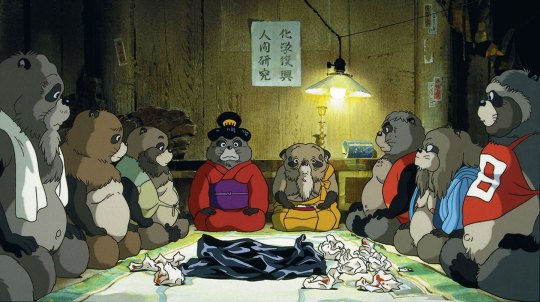
I feel like a lot of western anime fans only see Pom Poko as "lol that movie where the tanuki have comically oversized testicles." And yeah, that is indeed something in this movie but there's so much more. It's one of the boldest films I've ever seen, an "animated documentary" (to use Takahata's words) about a village of tanuki waging war against humankind's encroachment upon the natural world. It's such a genre grab-bag, critic Daniel Thomas' description fits it best: "The story weaves through slapstick comedy, social commentary, satire, surrealism, and tragedy. It changes moods much the way the tanuki change form, bending and molding into a new shape, and relentlessly moving forward." I still think Only Yesterday is Takahata's best film, but Pom Poko is strong competition and yet another film I can see myself rewatching many times to come.
Bullet Train (dir. David Leitch, 2022)
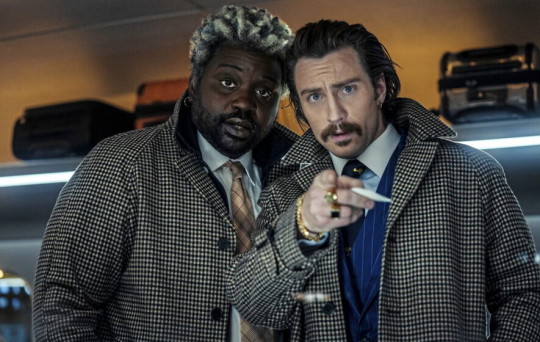
I still kick myself for not seeing this in the theater when it came out. Bullet Train is a wonderful lark of an action film. On first watch, I recall thinking it was like a live-action anime shot in a very Tarantino-esque style. I've seen it a few times now and I enjoy the hell out of it every time. And if you don't like it, well, you just might be a Diesel.
That Cold Day in the Park (dir. Robert Altman, 1969)

Another film with a so-so reputation that I really enjoyed. Sandy Dennis (who's gradually becoming one of my favorites with every performance I see from her) plays a virginal rich woman who takes in a handsome young guy one cold day. Her initial kindness quickly curdles into erotic obsession and her house guest has his own secrets. It's an early Robert Altman film and not his most polished work, but that makes it all the more fascinating to me. It's a creepy psychological thriller with a haunting ending, as well as an interesting time capsule of the late 1960s.
Faster, Pussycat! Kill! Kill! (dir. Russ Meyer, 1965)

Where has this movie been all my life?? It's a bizarre campfest about three criminally minded go-go dancers who romp across the California desert, strewing all kinds of havoc in their wake. It's such a strange movie that I don't know how to describe it properly: it's got a New Wave sensibility to it all the while indulging in exploitation B-movie nonsense. Definitely a fun film to watch with a group.
Jeanne Dielman, 23, quai du commerce, 1080 Bruxelles (dir. Chantal Akermann, 1975)

I finally bit the bullet to watch this one after it topped the 2022 Sight & Sound list. Do I think it's the greatest film of all time? No, but I don't like singling out any work of art for such a designation. Putting aside all the drama that ensued when this was granted GOAT status, Jeanne Dielman is a striking film. It's definitely not something you just throw on casually-- you need to set aside the time to watch it and be in the right headspace. My initial mild interest morphed into a sense of anxious dread as the film ground along its three hour runtime, its protagonist struggling to retain her total sense of self-possession and control as she's thrown off her groove by unexpected events.
The Wicked Lady (dir. Leslie Arliss, 1945)

This is not high art by any means. It's melodrama with a capital M, laying the cheese on thick. Margaret Lockwood plays a devious, scheming femme fatale in 18th century England who's a gold-digging noblewoman by day and a highwaywoman cavorting with bad boy James Mason by night. This is easily the most entertaining of the Gainsborough melodramas I've yet seen, dripping with soap opera antics, sumptuous costumes, and camp-a-plenty.
War and Peace (dir. Sergei Bondarchuk, 1966-1967)

There is no substitute for reading Tolstoy's massive novel, but this 1966 Soviet version is definitely a fine work in its own right. Filmed in three parts, it's about nine hours long and it does a good job capturing the interior lives of the characters in the source material. Everything about it is just breathtaking: the costumes, the sets, the massive numbers of extras during those battle scenes. It's the kind of intellectually and emotionally stirring epic that makes all those hours fly by.
The Sweet Smell of Success (dir. Alexander Mackendrick, 1957)
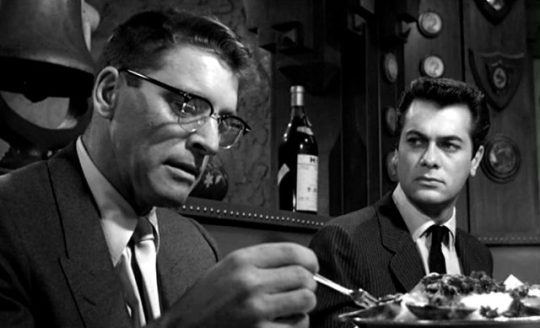
I often chafe when people act as though all 1950s American cinema were Leave it to Beaver wholesomeness and buttoned up repression. Some of the nastiest Hollywood movies I've ever seen came out of the 1950s and The Sweet Smell of Success is prime among them. Among the best of the late classic noir period, it follows Burt Lancaster as a popular but monstrous newspaper columnist who uses his power to control the lives of everyone around him, particularly his sister, to whom he has a borderline perverse attachment. The dialogue is as sharp ("You're dead, son. Get yourself buried." "I'd hate to take a bite out of you. You're a cookie full of arsenic.") and the cynicism as thick as the best of Billy Wilder. If you love noir, you can't miss out on this one.
What were your favorite film discoveries of 2023?
#thoughts#the sweet smell of success#little miss sunshine#that cold day in the park#bullet train#jeopardy 1953#the kiss before the mirror#malcolm x 1992#war and peace 1966#girlfriends 1978#the wicked lady#jeanne dielman#five miles to midnight#pom poko#the boy and the heron#faster pussycat! kill! kill!#black cat 1968#kuroneko#when a woman ascends the stairs#ivan the terrible#the red queen kills seven times
33 notes
·
View notes
Text
The BOLD THE FACTS tag by @helenofsimblr
The Rules are simple! Tag people and name a character you want to know more about! If you want to let the person you tagged decide who to showcase, then don’t name a character and they can pick somebody. The person who is tagged will then bold the remarks below which apply to their character &, if they want to, include a picture with their reply!
I was tagged by @akitasimblr for, of course, her fav:

🌸Zelda Darlington🌸
[ PERSONAL]
$ Financial: wealthy / moderate / poor (no club, no money, it’s 1930 😬) / in poverty
✚ Medical: fit / moderate / sickly / disabled / disadvantaged / non applicable
✪ Class or Caste: upper / middle / working / unsure / other (unemployed, unmarried expat??)
✔ Education: qualified / unqualified / studying / other (umm, early 20th century middle school graduate? 😅)
✖ Criminal Record: yes, for major crimes (gunna assume working in a speakeasy, being in an illegal relationship, and knowingly lying on her daughter’s birth certificate counts as “major”…) / yes, for minor crimes / no / has committed crimes, but not caught yet / yes, but charges were dismissed
[ FAMILY]
◒ Children: has children / has no children / wants children
◑ Relationship with Family: very close with sibling / not close with sibling(s) (without Rosella or her parents, baby girl is no longer very close with her family 😔) / has no siblings / sibling(s) is deceased
◔ Affiliation: orphaned / adopted / disowned / raised by birth parent / not applicable
[ TRAITS + TENDENCIES]
♦ extroverted / introverted / in between
♦ disorganized (especially in her own mind) / organized / in between
♦ close minded / open-minded / in between
♦ calm / anxious / in between
♦ disagreeable / agreeable (often to a fault) / in between
♦ cautious / reckless / in between (more that she’s both? Like she’s very cautious and afraid, but because of that often jumps headfirst into situations without thinking)
♦ patient / impatient / in between
♦ outspoken / reserved (again, often to a fault) / in between
♦ leader / follower / in between
♦ empathetic / vicious bastard / in between
♦ optimistic (and sometimes delusional 😂) -left this one exactly from Akita because SAME / pessimistic / in between
♦ traditional / modern / in between
♦ hard-working / lazy / in between (more that work is only a means to an end, and not her priority)
♦ cultured / uncultured / in between / unknown
♦ loyal / disloyal / unknown
♦ faithful / unfaithful / unknown
[ BELIEFS]
★ Faith: monotheist (Zelda gives me strong believes in a generalized Creator vibes ) / polytheist / atheist / agnostic
☆ Belief in Ghosts or Spirits: yes / no / don’t know / don’t care
✮ Belief in an Afterlife: yes / no / don’t know / don’t care
✯ Belief in Reincarnation: yes / no / don’t know (I feel like this would fit into Zelda’s worldview best, but I don’t know the historical accuracy or possibility of her doing so) / don’t care
❃ Belief in Aliens: yes / no / don’t know (mostly because someone tell me the ideas toward aliens in the 1920s 😂) / don’t care
✧ Religious: orthodox / liberal (I think Zelda has a strong spiritual streak but is not actively religious, especially not in a way that follows any type of dogma) / in between / not religious
❀ Philosophical: yes / no
[ SEXUALITY & ROMANTIC INCLINATION ]
❤ Sexuality: heterosexual / homosexual / bisexual / asexual / pansexual
❥ Sex: sex repulsed / sex neutral (only because I don’t see Zelda being very sexually motivated outside of a relationship) / sex favorable / naive and clueless
♥ Romance: romance repulsed / romance neutral / romance favorable /naive and clueless / romance suspicious
❣ Sexually: adventurous / experienced / naive (giving her this one as she’s only had one sexual partner, and I think views sex and sexuality as so entwined with her own romantic proclivities that she’s naive to other approaches) / inexperienced / curious
⚧ Potential Sexual Partners: male / female / agender / other / none / all
⚧ Potential Romantic Partners: male / female / agender / other / none / all
[ ABILITIES ]
☠ Combat Skills: excellent / good / moderate / poor / none
≡ Literacy Skills: excellent / good / moderate / poor / none
✍ Artistic Skills: excellent / good / moderate / poor / none
✂ Technical Skills: excellent / good (thanks to her parents Zelda is the most practically skilled of all our main characters right now) / moderate / poor / none
[ HABITS ]
☕ Drinking Alcohol: never / special occasions / sometimes / frequently / Alcoholic
☁ Smoking: tried it / trying to quit / quit / never / rarely / sometimes / frequently / Chain-smoker (literally all of them lol)
✿ Recreational Drugs: never / special occasions (some of them cigarettes ain’t just tobacco babes) / sometimes / frequently / addict
✌ Medicinal Drugs: never / no longer needs medication / some medication needed / frequently / to excess
☻ Unhealthy Food: never / special occasions (it’s New Orleans. Somebody was eating a beignet from time to time you know) / sometimes / frequently / binge eater
$ Splurge Spending: never (I don’t think Zelda much likes spending money or overvalues luxury) / sometimes / frequently / shopaholic
♣ Gambling: never / rarely / sometimes (I mean I DID have an illegal gambling den behind the club 😂) / frequently / compulsive gambler
I’ll tag @mccoppinscrapyard @that-fannerd-with-the-glasses @greatbritishsimchallenge @sasaofastora @swiftviolets @applesaucesims (which please feel free to ignore!) plus anyone else interested 🤗
55 notes
·
View notes
Text
Amin al-Husseini docu: part 8
Part 1 | Part 2 | Part 3 | Part 4 | Part 5 | Part 6 | Part 7 | Part 8 | Last
Translator's notes:
-> Erwin Rommel was the commander of the Nazi forces in North Africa. They landed in Tunisia and were moving eastward, towards the Land of Israel. Rommel was stoppsed at the Second El-Alamein battle, in November 1942.
-> Walter Rauff was appointed as, among other things, the head of a unit called Einsatzgruppe Egypt (similarly named to the Einsatzgruppen in Europe, the "death squads" in charge of exterminating the Eastern European Jews, and which according to the latest research shot to death at least 2.5 million Jewish men, women and children in the shooting pits there). Einsatzgruppe Egypt was stationed in Athens, awaiting deployment in the Land of Israel once it would be occupied by Rommel's forces. The unit of 24 men was supposed to instruct the local Arabs, recruited by the Mufti, in how to exterminate Jews in gas chambers that were to be built in the Dotan Valley.
-> Prof. Yossi ben-Artzi is actually presented by the docu as "researched Operation Atlas," but I can't in good conscience write that, when he was actually researching The Templers. They are a German radical sect, which was established in 1861, and aspired to form the "perfect Christian society" to speed up the return of Jesus, which could also be helped by colonizing Israel. They began to do so around the end of the 1860's. This sect views Jews as denied salvation, since they didn't accept Jesus. At the peak of the Templers' colonization in Israel, they had somewhere between 900 to 1,200 adults, with a total community size of around 2,000 members living here. In the 1930's, they greatly identified with the Nazis, and at least 300 adult Templers were also officially members of the Nazi party. They even had local chapters of the Nazi party and the Hitler Jugend (Hitler youth) at their colonies in Israel. By 1934, there were reports of the Templers spreading Nazi ideology to local Arabs in Israel. Templer men were drafted into the Nazi army (the Wehrmacht) on Aug 20, 1939. Some of them left for Germany with their families, altogether 550 people. The British expelled most of those remaining to Australia. The few left were expelled in 1948, following Israel's Independence War. Israel paid the sect reparations for the property they had to leave behind (most of which was confiscated by the British). Today, there are still about 1,300 Templers living in Australia (with a center in Melbourne) and 700 in Germany. Their main center there is in Stuttgart, where they have their own conference hall, archive and monthly newspaper.
(in the pic: The Fast Hotel in Jerusalem, displaying several country flags along with the Nazi one in 1933)

-> Operation Atlas included 5 parachutists. The three German ones were Kurt Wieland, who headed a local Hitler Jugend chapter and left in 1936 for Germany to join the Nazi army, Friedrich Deininger, who helped the Arabs during the 1936-1939 Arab revolt (in which many Jews and Brits were targeted in Israel) and was incarcerated for this by the British, but he managed to escape to Germany, and Werner Frank, who had joined the Hitler Jugend in 1934 already. The two Arabs were Abdul Latif, who had participated in the Arab revolt, was expelled for it by the Brits to Iraq, but ended up becoming one of the Mufti's assistants in Berlin, and Hasan Salama, one of the leaders of the Arab revolt (during which he also killed many Arabs and gained from stolen property), after which he fled to Lebanon, then Syria, where he joined the Mufti on his way to Iraq, and finally to Germany. Salama became one of the Arab leaders during Israel's Independence War, and in fact he led the attack on bus 2904 from Netanya to Jerusalem, which is the anti-Jewish attack that started the war on Nov 30, 1947.

-> The participants of Operation Atlas parachuted east of Jericho on Oct 6, 1944. Some of their gold coins got the local Arabs talking, leading the British police to them. By Oct 11, even the Jewish press in Israel published the info on the strangers who had parachuted there. On Oct 15, the Brits captured Wieland, Frank and Latif. On Oct 16, they formally published this info. A few days later, they called off the search for the remaining two men. Deininger was captured in 1946, when he tried to contact his family, and Salama, who oversaw the start of Israel's Independence War, was eventually killed in a battle not too far from Rosh Ha'Ayin, the area where the springs the operation is said to have targeted are, and the same zone that Salama himself was from.
-> Decades after the war, Professor ben-Artzi, out of admiration for some of the Templers' colonialist accomplishments in Israel, lived with them in Stuttgart to gain their trust and study them. He was told by one man, who had returned from Australia, that the (then undisputed) story of Operation Atlas' goal being to poison Tel Aviv's water is untrue. According to ben-Artzi, 7 years later the man confessed to be the Nazi Waffen SS soldier Werner Frank, and it's his testimony that the professor is mostly basing his assessment of Operation Atlas on.
-> I'll offer my POV on Operation Atlas, but it's obviously just my personal opinion. I do think Frank had motivation to deny his complicity in what would have been a mass murder, for his own sake and that of his sect. I also don't know why his testimony should be seen as any more reliable than that of so many other Nazi criminals, who after the end of WWII, denied some of the facts or their own motivation. I do believe the substance the parachutists were carrying was poison. Other than Professor ben-Artzi, no historian disputes this, they mainly argue what the poison was for. Beyond the fact that black pepper is a much easier way to throw dogs off, poison specifically is a really dumb idea for that task, because it's bound to leave a trail of dead dogs that would lead back to the parachutists. And of course, the Mufti was a raging genocidal antisemite, obsessed with making sure that even Jews outside of Israel would be exterminated, so why in the world would he be so involved, and even emotionally invested (calling the parachutists his sons) if the operation was not targeting Jews specifically?
(for all of my updates and ask replies regarding Israel, click here)
#israel#antisemitism#israeli#israel news#israel under attack#israel under fire#terrorism#anti terrorism#hamas#antisemitic#antisemites#jews#jew#judaism#jumblr#frumblr#jewish#israelunderattack#al-husseini#ישראבלר
35 notes
·
View notes
Text




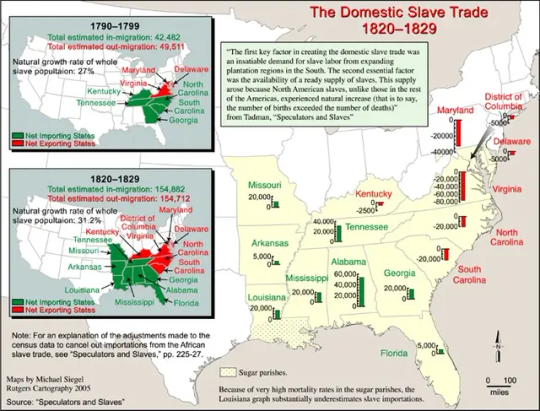
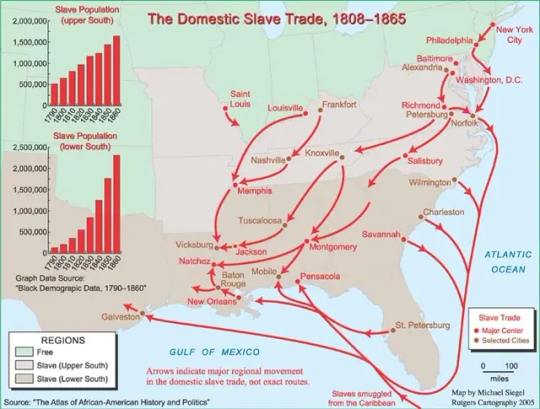

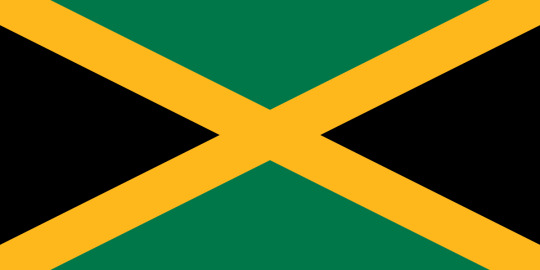



The Igbo in the Atlantic slave trade
Bussa, Barbadian slave revolt leader of Igbo descent
Edward Blyden, Americo-Liberian educator, writer and politician of Igbo descent
Paul Robeson, American actor and writer whose father was of Igbo descent
Aimé Césaire, Martiniquais poet and politician who claimed Igbo descent) argues that many of the slaves taken from the Bight of Biafra across the Middle Passage would have been Igbo. These slaves were usually sold to Europeans by the Aro Confederacy, who kidnapped or bought slaves from Igbo villages in the hinterland. Igbo slaves may have not been victims of slave-raiding wars or expeditions but perhaps debtors or Igbo people who committed within their communities alleged crimes. With the goal for freedom, enslaved Igbo people were known to European planters as being rebellious and having a high rate of suicide to escape slavery. There is evidence that traders sought Igbo women. Igbo women were paired with Coromantee (Akan) men to subdue the men because of the belief that the women were bound to their first-born sons’ birthplace.
It is alleged that European slave traders were fairly well informed about various African ethnicities, leading to slavers targeting certain ethnic groups which plantation owners preferred. Particular desired ethnic groups consequently became fairly concentrated in certain parts of the Americas. The Igbo were dispersed to colonies such as Jamaica, Cuba, Saint-Domingue, Barbados, Colonial America, Belize and Trinidad and Tobago, among others.

Rihanna is also Igbo
Colonial Nigeria
The establishment of British colonial rule in present-day Nigeria and increased encounters between the Igbo and other ethnicities near the Niger River led to a deepening sense of a distinct Igbo ethnic identity. The Igbo proved decisive and enthusiastic in their embrace of Christianity and Western-style education. Because of the incompatibility of the Igbo decentralized style of government and the centralized system including the appointment of warrant chiefs required for British system of indirect rule, the period colonial rule was marked with numerous conflicts and tension. During the colonial era, the diversity within each of Nigeria's major ethnic groups slowly decreased, and distinctions between the Igbo and other large ethnic groups, such as the Hausa and the Yoruba, became sharper.
The establishment of British colonial rule transformed Igbo society, as portrayed in Chinua Achebe's novel Things Fall Apart. Colonial rule brought about changes in culture, such as the introduction of warrant chiefs as Eze (indigenous rulers) where there were no such monarchies. Christian missionaries introduced aspects of European ideology into Igbo society and culture, sometimes shunning parts of the culture. The rumours that the Igbo women were being assessed for taxation sparked off the 1929 Igbo Women's War in Aba (also known as the 1929 Aba Riots), a massive revolt of women never encountered before in Igbo history.
Aspects of Igbo culture such as construction of houses, education and religion changed following colonialism. The tradition of building houses out of mud walls and thatched roofs ended as the people shifted to materials such as concrete blocks for houses and metal roofs. Roads for vehicles were built. Buildings such as hospitals and schools were erected in many parts of Igboland. Along with these changes, electricity and running water were installed in the early 20th century. With electricity, new technology such as radios and televisions were adopted, and have become commonplace in most Igbo households.
A series of black and white, silent films about the Igbo people made by George Basden in the 1920s and 1930s are held in the British Empire and Commonwealth Collection at Bristol Archives

#african#afrakan#kemetic dreams#africans#brownskin#brown skin#afrakans#african culture#afrakan spirituality#igbo#nigerian#british empire#jamaica#jamaican#barbados#igbo culture#igbo history#rihanna
25 notes
·
View notes
Text
Memorials to victims of Stalinist repression in Russia are disappearing or being vandalised amid increasing attempts to rehabilitate the Soviet dictator.
For the past nine years, more than 700 plaques have been put up in Russia and elsewhere, commemorating the final residences of people who died in Stalin's purges in the 1930s.
Since May, however, dozens have disappeared in several Russian cities, according to Oksana Matievskaya, who is part of the plaque project Posledniy Adres (last address).
Police are not investigating the issue and Ms Matievskaya believes this is no coincidence.
"The memory of the Soviet terror challenges the concept of the state always being right and is, therefore, inconvenient for the Russian authorities. Especially following the invasion of Ukraine," she said.
Millions of people described as "enemies of the people" were sent to Soviet labour camps, known as the Gulag, and 750,000 were summarily murdered during Stalin's Great Terror in the 1930s.
Other memorials are also being targeted.
At least 18 monuments to victims of repression as well as foreign soldiers who fought in World War Two have been reported stolen or vandalised since February 2022. Most are dedicated to Polish nationals.
In October, a brick memorial to a prominent Polish priest was torn down and destroyed in the city of Vladimir.
A concrete cross erected in Komi republic, in memory of Polish prisoners, was also found demolished. Police attributed its destruction to bad weather and declined to initiate criminal proceedings, local media said.
Soviet authorities executed hundreds of thousands of Poles after 1939. In 1940, 1.7 million were deported to Gulag camps in Siberia and Kazakhstan.
Alexandra Polivanova of civil rights group Memorial believes the damage was ordered or carried out by authorities because Moscow wants the Soviet Union to be perceived as a powerhouse rather than an oppressive state.
She suggests the government doesn't want Russians to know the truth about their tragic past, especially now that Russian soldiers have been accused of war crimes in Ukraine.
"The authorities try to erase the memory of the crimes of that empire to cover up or justify the crimes of this one."
This is taking place alongside a resurgence in Stalin's popularity.
In July, a survey by independent pollster the Levada Centre suggested that 63% of Russians had a favourable attitude towards the Soviet leader - his highest approval rating in 13 years.
The explanation behind his rising popularity is not certain but Russian propaganda justifying the war with Ukraine has also glorified its Soviet past.
And unlike memorials to his victims, those to Stalin have increased in number.
An investigative channel on social media site Telegram called "We can explain" says there are 110 Stalin statues in Russia - 95 erected during President Vladimir Putin's rule and at least four during the full-scale invasion of Ukraine.
Some Russians want even more. In August the private Russkiy Vityaz (Russian Knight) Foundation inaugurated an 8m-high statue of Stalin in the town of Velikiye Luki, and is collecting money for more.
Its website argues these monuments are crucial given that Russia is fighting "a real Patriotic war". The "Great Patriotic War" is how Russians describe the 1941-1945 war between the USSR and Nazi Germany. The Kremlin regularly compares Russia's invasion of Ukraine to World War Two.
Russkiy Vityaz, which is said to have been founded by the Russian Special Forces Veterans Association, has declined to comment on the reasons for its campaign.
52 notes
·
View notes
Text
Thoughts I had while watching The Wizard of Oz after a long time
1 - This is the Wicked Witch of the East. She's wearing high heels that look suspiciously similar to the ruby slippers, and later Dorothy tells the Munchkins how the Wicked Witch of the East flew too close to the house.
The wind began to switch – the house to pitch and suddenly the hinges started to unhitch.
Just then the Witch – to satisfy an itch went flying on her broomstick, thumbing for a hitch.
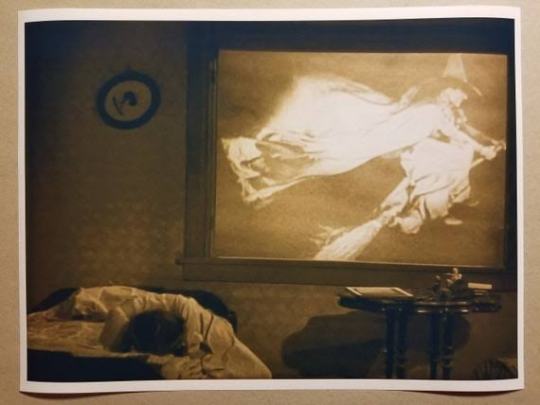
2 - Why do Munchkins think goblins are destined to go to hell? Are there goblins in Oz?
Wake up, the wicked witch is dead!
She's gone where the goblins go below, below, below, yo ho
3 - Is Oz technically a county?
4 - Oz seems to be a mostly agrarian society. You could see farmlands in almost all backgrounds
5 - The Wicked Witch of the West is Hitler and Mussolini. The Wicked Witch is green, because the Winkies are green. She's a sovereign leader who enslaved her own people, and is so tyrannical, that they are glad and relieved when she's dead. I think 1930's audiences were more than likely to understand these subtexts.
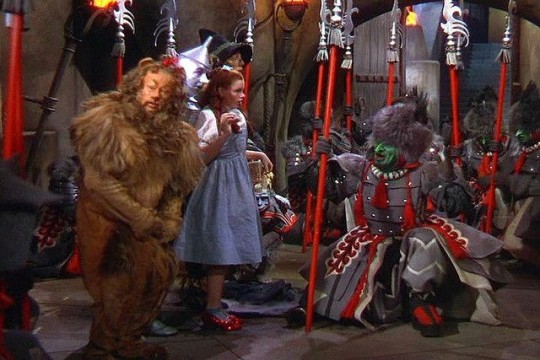

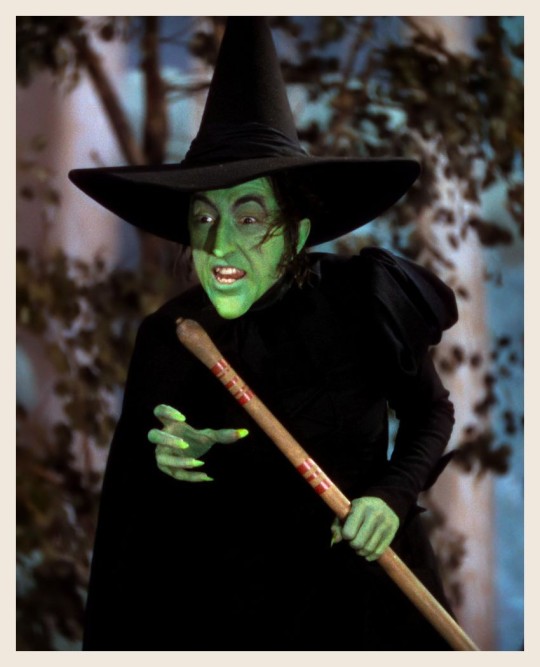
6 - The LGBTQ fandom of the movie subverted the whole message.
In the film, the Land of Oz, no matter how much it's more colorful, more cheerful and more liberated than Kansas, is treated just like a childish fantasy, and Kansas is the reality that Dorothy has to learn to conform to live within. The message comes as if you should never try to escape your dreary, monochromatic conservative rural state.
The LGBTQ following, the friends of Dorothy, identity themselves more with Oz, and prefer to live over the rainbow in a magical fairyland where they can be themselves and be celebrated because of it, than to be forced to conform to society expectations in dreary Kansas.

@ariel-seagull-wings @autistic-prince-cinderella @tamisdava2 @natache @thealmightyemprex @the-blue-fairie
52 notes
·
View notes
Text
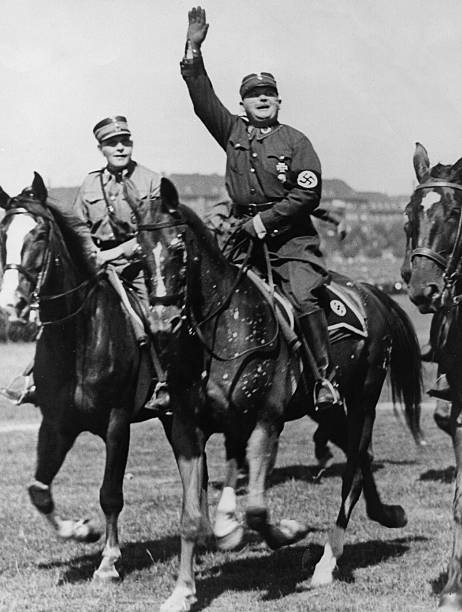
This is Ernst Röhm, the head of the SA, timeline:
1887: He was born in Munich.
1906: He volunteered for the 10th Prince Ludwig Infantry Regiment.
1908: He was appointed second lieutenant.
1914: The First World War began.
1914: He served at the front as adjutant of the 1st Battalion of the 10th König Infantry Regiment.
1914: He was seriously wounded in the face during a fight in the Chanot woods in Lorraine.
1915: He was promoted to lieutenant.
1916: He was decorated with the Iron Cross first class.
1916: He was wounded in the chest during an attack on a fortification at Verdun and spent the rest of the war in France and Romania as a staff officer.
1917: He was promoted to captain.
1918: He contracted the Spanish flu, which he survived after a long convalescence.
1918: The First World War ended.
1918: Following the armistice that ended the war, Röhm continued his military career as an adjutant in the Reichswehr.
1919: He was one of the senior members in Colonel von Epp's Bayerisches Freikorps für den Grenzschutz Ost (Freikorps Epp), formed at Ohrdruf .
1919: He joined the Nazi Party.
1919: Not long afterward he met Adolf Hitler, and they became political allies and close friends.
1923: He took part in the Munich Putsch.
1924: He tried in February 1924 for high treason. He was found guilty and sentenced to a year and three months in prison, but the sentence was suspended and he was granted a conditional discharge.
1924: He became a Reichstag Deputy for the völkisch ( = racial-national) National Socialist Freedom Party.
1925: Following some conflicts with Hitler, he broke off relations with the leader, agreeing to go to Bolivia to join the local army.
1930: He was called home expressly by Hitler in November 1930 to reorganize the SA following the unrest within it.
1931: The Münchener Post, a Social Democratic newspaper, obtained and published Röhm's letters to a friend discussing his homosexual affairs.
1933: Adolf Hitler was appointed Chancellor of Germany.
1933: He became part of the first Hitler government and was appointed Reichsleiter.
1934: He went so far as to propose that the Reichswehr, the SA, the SS and all the groupings of ex-combatants be unified into a single "people's army" under a single War Ministry to which - this was clearly implied - he, Röhm, would had to supervise.
1934: He died following the Night of the Long Knives.
Sources:
Wikipedia: Ernst Röhm
Military Wiki: Ernst Röhm
❗❗I DON'T SUPPORT NAZISM,FASCISM OR ZIONISM IN ANY WAY, THIS IS AN EDUCATIONAL POST❗❗
38 notes
·
View notes
Text

Classic Heavy, The Boss of BLU
Classic Heavy, The Boss of BLU - The intimidating and bad-tempered leader of Team Fortress Classic. Cheavy is feared throughout the mercenary world, regarded as one of the best mercenaries money can buy. First hired in the 1930's, Cheavy established himself as a hot-headed but strategic mind and one of the best team captains in the Gravel Wars.
Though Cheavy is the face of Team Fortress Classic and quickly whipped his new team into shape, earning TFC a terrifying reputation amongst mercenaries. While still bad-tempered, Cheavy was significantly more emotionally stable and reasonable in his younger years. It's been said that the man he was in the 1930's and the man he became in the 1970's are two very different people.
Hailing from an unknown city somewhere in the Northern United States, Cheavy grew up in a rough household. His father was a hyper-religious missionary and was often travelling abroad to 'convert' local populations in Africa and Asia. In reality, his father was just a violent egotist who cared more about the prestige and power that came from religious conversion. Cheavy was also the oldest of three siblings: a middle brother and a younger sister. He has an extremely poor relationship with his siblings and his father and cut off all ties with them once he reached adulthood. His mother was the only person he stayed in contact with for years. When he was 18, he ran away from home and joined an unknown mafia somewhere in Russia. It's said that this mafia is where he received most of his combat training, but he has so far remained silent on this matter ever since joining BLU.
Upon joining BLU, Cheavy developed a close friendship with Cmedic that eventually progressed into a romantic relationship based on mutual trust and respect. The two would remain nearly inseparable both on and off the battlefield. The two men embodied the age-old bond of Heavys and Medics, becoming unfailingly loyal to one another. Cheavy came to trust Cmedic more than himself and often confided in Cmedic regarding the stressors of his job. During his tenure, Cheavy found safety in Cmedic's arms that was otherwise nonexistent in the Gravel Wars. Cheavy and Cmedic would go on to make plans to settle down with one another once their contracts with BLU ended.
Unfortunately, this close bond would be shattered following a tragic incident on November 2nd, 1952. Sometime in the middle of the night, Cmedic would disappear without a trace. Sabotage was a likely answer as the base's cameras mysteriously shut down before Cmedic's disappearance could be captured. According to Blutarch Mann, Cmedic was kidnapped and murdered by the RED's, a claim that would lead to the slow degradation of Team Fortress Classic and the mental breakdown of Cheavy for the next 20 years. Cheavy himself would suffer the worst as a result of this news, quickly degrading into an angry, grieving wreck who was desperate for anyone to blame for Cmedic's disappearance. The RED's were a convenient scapegoat, so Blutarch took advantage of Cheavy's emotional state to turn him into a killing machine, further damaging Cheavy's mental health and turning him into the unstable and violent mercenary as seen in The Naked and the Dead.
During the events of Take Back The Fortress, Cheavy would miraculously be revived by unknown means. To this day, it is a complete mystery as to how or why Cheavy was revived and even Cheavy himself is unsure. While he does remember his fistfight with Heavy, he seems to have amnesia regarding anything that happened after inserting the Life Extender into his side. Medic's tests have showed nothing out of the ordinary in his biology, so his 'undeath' remains a mystery.
Cheavy would reunite with Cmedic during TBTF and would eventually be set on a path of reconciliation and recovery. Part of his journey includes mastery over his Fire Resonance Ark, an artifact that grants him limited Pyrokinesis. The Fire Ark requires Cheavy's emotions to properly work, but Cheavy's emotional state means the Fire Ark is dangerously unstable for him to use.
🌟| My DA | My AO3 |🌟
65 notes
·
View notes